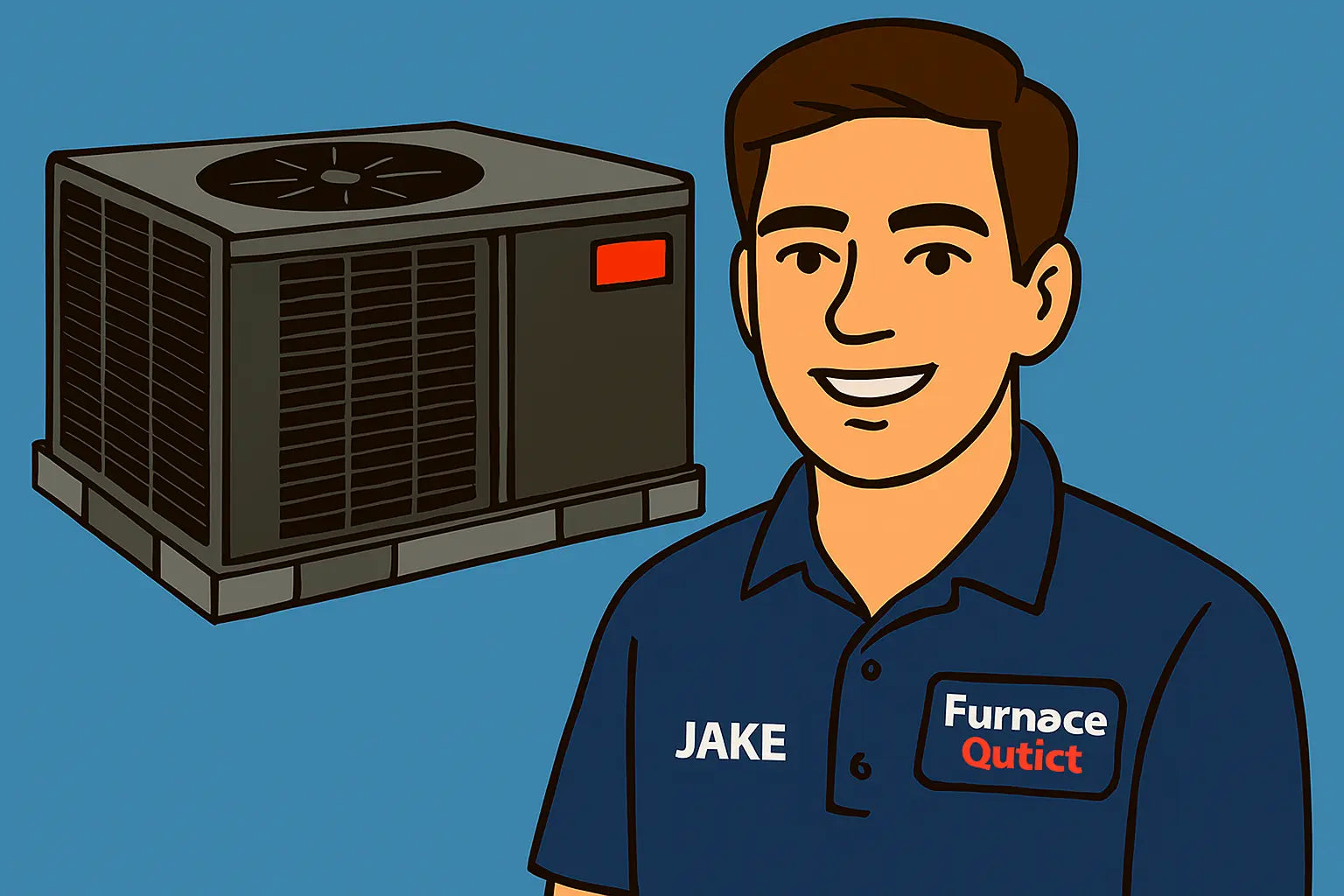Alright folks, Jake here.
So, you’ve got your Goodman GPCH33631 installed, wired, and ready to roll—but now comes the fun part: charging it with R-32 refrigerant and making sure it’s leak-tight. If you’ve never handled R-32 before, let me give you a heads-up: it’s not your grandpa’s R-22. This stuff is more efficient, a little more flammable (A2L rating), and a whole lot less forgiving if you get sloppy.
I’ve seen rookies try to “wing it” by eyeballing pressures and dumping refrigerant in until it “feels cold.” That’s how you end up with a frozen coil, a sky-high head pressure, or worse—a safety incident. We’re doing this the right way.
Step 1: Know Your Refrigerant
The GPCH33631 is charged with R-32—not R-410A, not R-22. R-32 runs at similar pressures to 410A but has different glide, density, and handling rules.
A quick refresher:
-
R-32 has a Global Warming Potential (GWP) about one-third of 410A, which is why manufacturers like Goodman are switching over.
-
It’s classified as A2L (mildly flammable) under ASHRAE 34, which means you need proper ventilation and ignition-free workspaces.
-
You need hoses, recovery machines, and leak detectors rated for A2L refrigerants—no exceptions.
For the technical breakdown, the AHRI R-32 fact sheet is worth a look—it’s short, sweet, and clear.
Step 2: Tools You’ll Need
Before you even think about cracking the service valves:
-
Digital manifold gauges with R-32 support
-
Micron gauge for vacuum verification
-
A2L-rated recovery machine (if reclaiming refrigerant)
-
Calibrated leak detector for R-32
-
Nitrogen regulator and tank (for pressure testing)
-
Refrigerant scale
-
Safety gear: gloves, goggles, and ventilation fan
And no—your old analog gauges from the 90s aren’t cutting it here. The EPA Section 608 refrigerant handling rules are crystal clear about using equipment suited to the refrigerant.
Step 3: Safety First (Seriously)
R-32’s A2L rating means:
-
No open flames or sparks nearby
-
Work in a well-ventilated area
-
Avoid charging in confined spaces without mechanical ventilation
-
Use grounded, explosion-proof tools if possible
For handling flammable refrigerants safely, the U.S. Consumer Product Safety Commission’s guidance has practical, plain-English tips.
Step 4: Leak Detection Before Charging
Never, and I mean never, charge a system without first confirming it’s leak-tight.
Procedure:
-
Pressurize the system with dry nitrogen to the manufacturer’s rated test pressure (usually ~300 psi for the GPCH33631).
-
Soap all joints and connections with a quality leak detection fluid—not dish soap (it can cause corrosion).
-
Use your electronic leak detector to sniff all brazed joints, service valves, and flare fittings.
-
Hold pressure for at least 30 minutes. If it drops, find and fix the leak before moving on.
The ASHRAE leak testing guidelines are the gold standard here.
Step 5: Pulling a Deep Vacuum
Once you’ve confirmed no leaks, it’s time to evacuate the system.
-
Connect your vacuum pump with large-diameter hoses (skip the manifold if possible to reduce restrictions).
-
Pull down to at least 500 microns—lower if you can.
-
Isolate the pump and watch the micron gauge. If it rises quickly, you still have moisture or a leak.
Moisture in the system isn’t just bad—it’s refrigerant-killer bad. It can create acids that eat your compressor from the inside.
Step 6: Charging by Weight
The GPCH33631’s nameplate will list the factory refrigerant charge. Since you’re installing a new system, you’ll typically charge by weight:
-
Place your R-32 cylinder on a refrigerant scale.
-
Open the liquid line service valve and slowly meter refrigerant into the system until you hit the target weight (account for line set length adjustments if applicable).
-
Start the system and let it run for 10–15 minutes before fine-tuning.
Step 7: Fine-Tuning with Superheat/Subcooling
After the initial charge, check the system’s operating pressures and temperatures.
-
For TXV systems, target the manufacturer’s subcooling spec (usually around 8–12°F).
-
For fixed-orifice systems, check the superheat (usually 10–15°F at moderate outdoor temps).
Adjust the charge in small increments—2–4 ounces at a time—and let the system stabilize before re-measuring.
Step 8: Final Leak Check Under Load
Once the system is running and charged, do one last leak pass with your detector. Sometimes leaks only show under vibration or heat expansion.
Step 9: Documentation & Labels
For safety and compliance:
-
Label the unit clearly with “Contains R-32” and the total refrigerant charge.
-
Record pressures, temperatures, and weights in your install log.
-
Keep a copy for your records and the customer’s.
Common Rookie Mistakes to Avoid
-
Charging by “feel” instead of weight
-
Skipping the nitrogen pressure test
-
Using non-A2L-rated equipment
-
Ignoring ambient temperature impact on readings
-
Forgetting to account for additional line set length in charge weight
Wrap Up From Jake
And that’s how you get your GPCH33631 fully charged with R-32, leak-free, and running smooth. No guessing games, no shortcuts, no angry callbacks from customers.
If you need to double-check the specs or grab another unit for the next job, here’s the Goodman GPCH33631 product page I keep bookmarked. It’s got all the factory numbers you’ll want at your fingertips.
Need airflow tips for this system? Visit: The Great Guide to Ductwork and Airflow Tuning for Horizontal Goodman Units.
Now take a step back, listen to that quiet hum, and enjoy the satisfaction of a system that’s dialed in perfectly.
- Jake out 🍺







